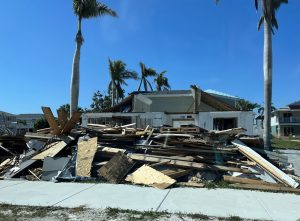Citizens explains its private market non-competitiveness
 Florida’s Hurricane Catastrophe Fund is poised to borrow lots more money when the next big storm hits, Citizens Property Insurance is moving closer to non-competitiveness with the private market and actuarial soundness, and the worst underwriting loss in 100 years for the homeowners insurance industry. It’s all in this week’s Property Insurance News.
Florida’s Hurricane Catastrophe Fund is poised to borrow lots more money when the next big storm hits, Citizens Property Insurance is moving closer to non-competitiveness with the private market and actuarial soundness, and the worst underwriting loss in 100 years for the homeowners insurance industry. It’s all in this week’s Property Insurance News.
 William Rabb of the Insurance Journal came out with an interesting article last week, Hurricane Could Drain Florida Cat Fund’s Reserves. But That May Be OK, Report Says. It focuses on the Florida Hurricane Catastrophe Fund which provides low-cost reinsurance to Florida property insurance companies to help cover large catastrophic losses from storms. It discusses a report from Moody’s that states the Cat Fund is one good hurricane away from having its current reserves of $6.9 billion wiped out, forcing it to borrow more money. Other experts disagree with Moody’s saying that it takes a long time to drain almost $7 billion and the Cat Fund should provide more reinsurance capacity to insurers writing in Florida. The Cat Fund’s purpose is to “stabilize” and react to the worldwide reinsurance market, and should function as a shock absorber when the markets are uncertain. The Cat Fund pays its cost of capital through a small surcharge on every Florida insurance policy premium. As yet unrealized projections of 2022’s Hurricane Ian reference a nearly $10 billion total loss, and earlier this year the Cat Fund borrowed $1 billion to replenish past debt coming due. The article provides insight and diverse opinions on what impact sudden borrowing would have on Florida’s property insurance companies and the fund’s liquidity.
William Rabb of the Insurance Journal came out with an interesting article last week, Hurricane Could Drain Florida Cat Fund’s Reserves. But That May Be OK, Report Says. It focuses on the Florida Hurricane Catastrophe Fund which provides low-cost reinsurance to Florida property insurance companies to help cover large catastrophic losses from storms. It discusses a report from Moody’s that states the Cat Fund is one good hurricane away from having its current reserves of $6.9 billion wiped out, forcing it to borrow more money. Other experts disagree with Moody’s saying that it takes a long time to drain almost $7 billion and the Cat Fund should provide more reinsurance capacity to insurers writing in Florida. The Cat Fund’s purpose is to “stabilize” and react to the worldwide reinsurance market, and should function as a shock absorber when the markets are uncertain. The Cat Fund pays its cost of capital through a small surcharge on every Florida insurance policy premium. As yet unrealized projections of 2022’s Hurricane Ian reference a nearly $10 billion total loss, and earlier this year the Cat Fund borrowed $1 billion to replenish past debt coming due. The article provides insight and diverse opinions on what impact sudden borrowing would have on Florida’s property insurance companies and the fund’s liquidity.
 Citizens Property Insurance: Citizens went before Florida regulators at a public rate hearing last week to explain its requested 14% overall increase in its personal lines policies, the maximum allowed under the state’s rate increase cap glide path. Commercial lines policies would increase 10.3%. If approved, the average homeowners (HO-3) policy premium would go from $3,560 to $4,041 and HO-6 (condo) would go from $1,535 to $1,753.
Citizens Property Insurance: Citizens went before Florida regulators at a public rate hearing last week to explain its requested 14% overall increase in its personal lines policies, the maximum allowed under the state’s rate increase cap glide path. Commercial lines policies would increase 10.3%. If approved, the average homeowners (HO-3) policy premium would go from $3,560 to $4,041 and HO-6 (condo) would go from $1,535 to $1,753.
Citizens rates are guided by caps and a new non-competitiveness requirement mandated by the Florida Legislature and it was under those prisms that this hearing was focused. Citizens Chief Actuary Brian Donovan explained the methodology Citizens used to determine its competitiveness compared to the private insurance market. But “Even after a 14% increase, 98% of the policies would remain competitive,” he told regulators. South Florida policyholders would see higher rate increases solely based on the non-competitiveness requirement and not actuarial rate need. Likewise, HO-6 are seeing 13% increases where they otherwise would have increased only 2.2%. You can read more about the new methodology and what Citizens President & CEO Tim Cerio said about the Florida marketplace in our complete report here.

A home in Ft. Myers Beach awaits repairs from Hurricane Ian damage, June 27, 2023
Homeowners Insurance Losses: According to the U.S. census, between 2010 and 2020, California, Florida, Georgia, North Carolina, Texas and Washington accounted for 53% of the country’s population growth. All six states have drawn Mother Nature’s center of attention, causing the U.S. homeowner’s insurance market to suffer $15 billion in underwriting losses in 2023, more than double from 2022. In fact, 2023 saw the worst underwriting results this century.
The Southern and Western parts of the U.S. (who host the most severe convective storms, hurricanes and wildfires) are the most popular population regions, each growing about 10% from 2010 and 2020. New England’s combined ratio was 20 points below the South Atlantic and Southern Region, with the rest of the country breaking even.
The worsening insurance company loss ratios serve as compelling evidence of the significant impact that climate risks and population migration have had on the homeowners insurance industry. Intensifying climate-related events such as hurricanes, wildfires, and floods have led to an increase in claims, driving up insurance carriers’ expenses. Simultaneously, population migration towards high-risk areas, often due to factors like housing affordability and lifestyle preferences, has further exacerbated the frequency and severity of claims. These trends have collectively strained the financial performance of insurance companies, underscoring the urgent need for the industry to adapt to evolving environmental and demographic conditions.
LMA Newsletter of 8-5-24

